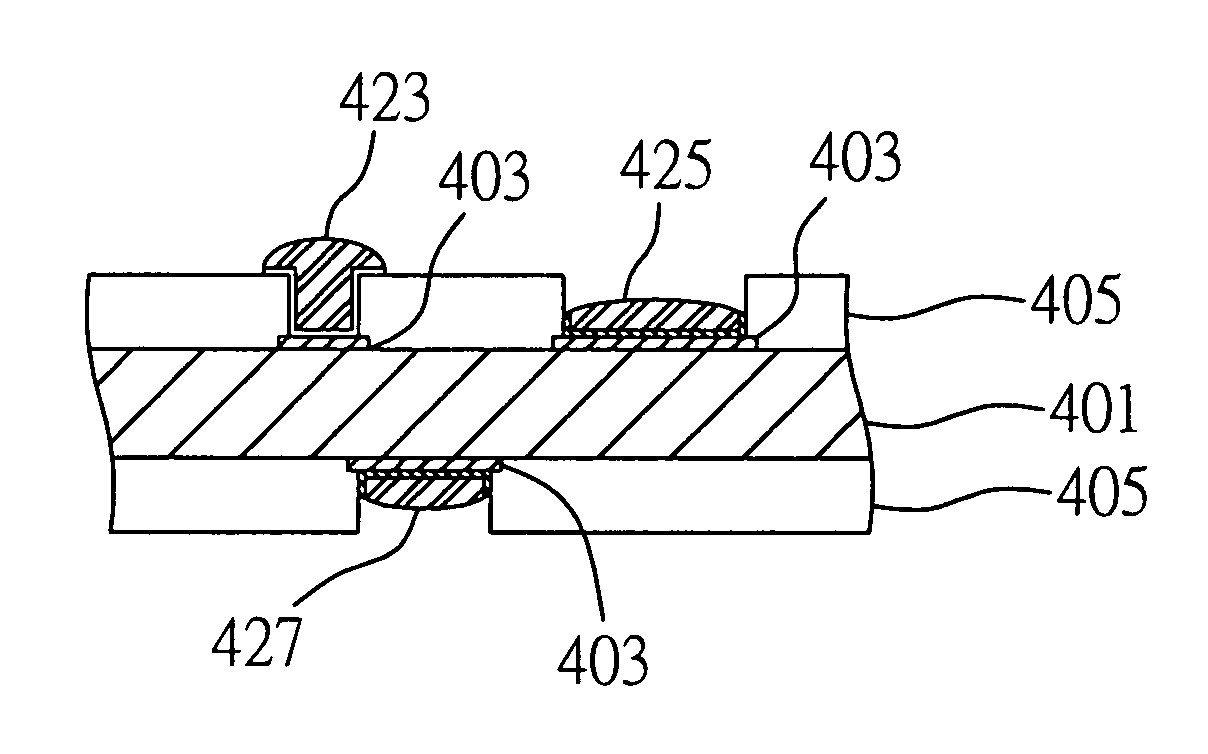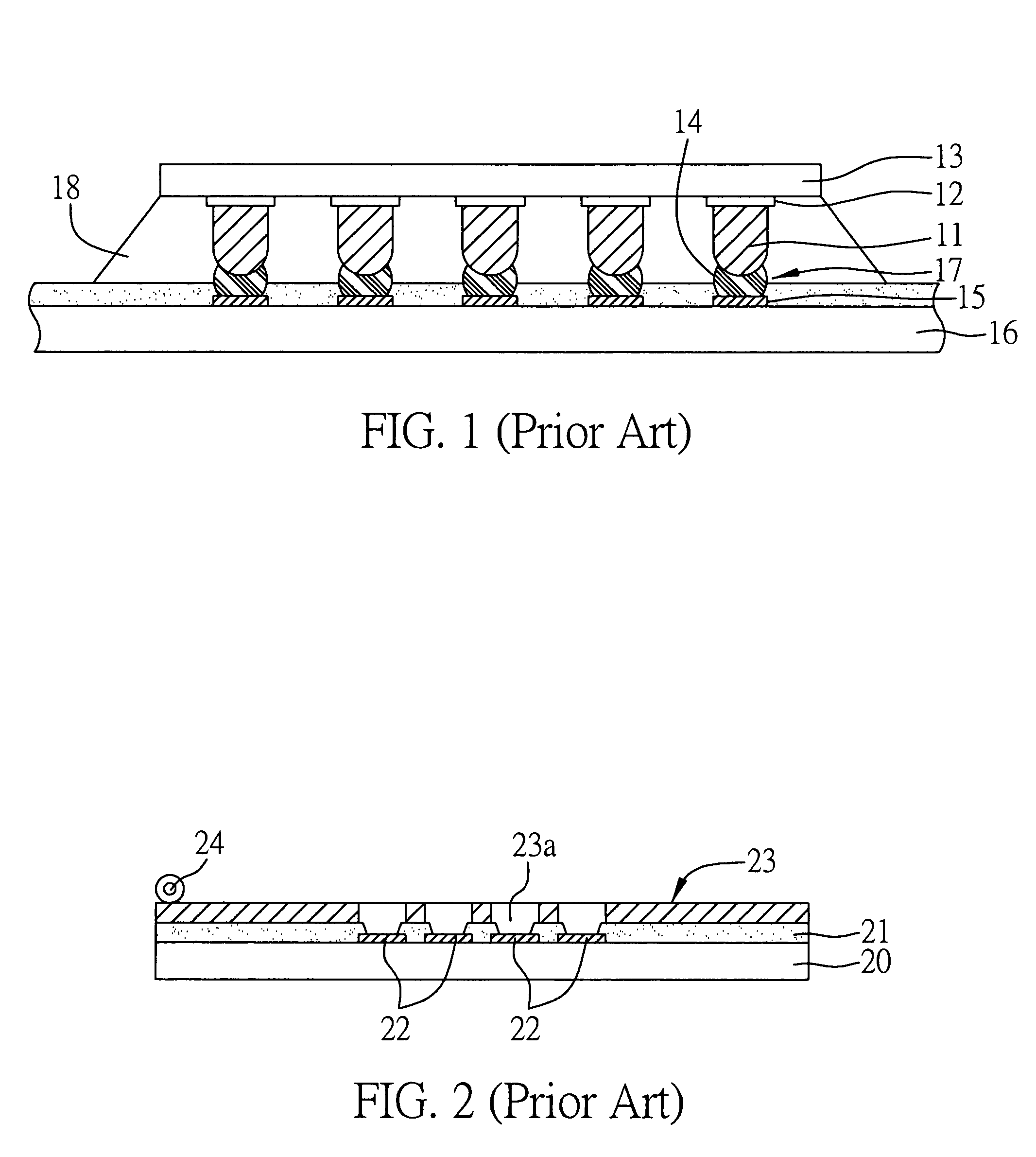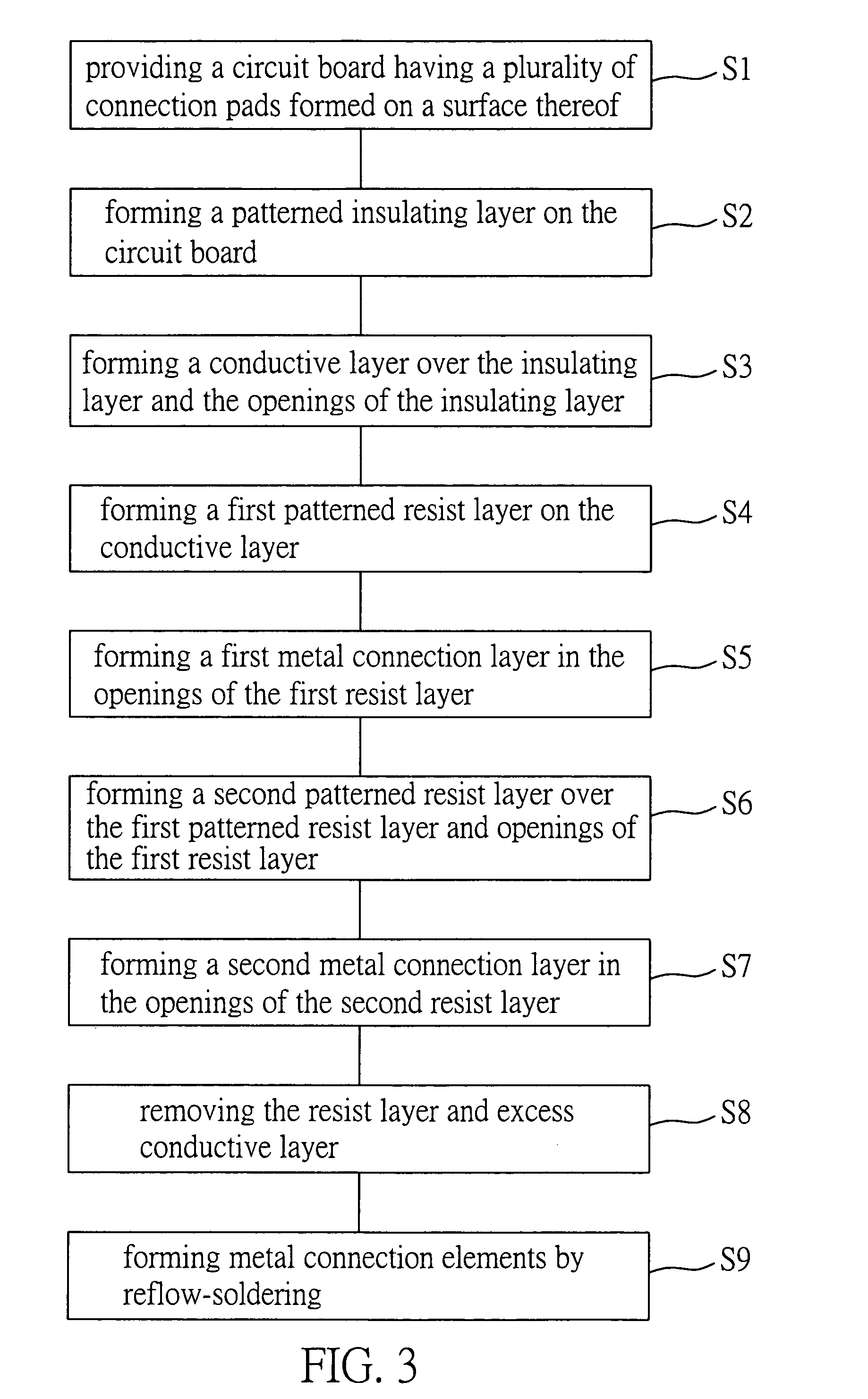Method for fabricating connection terminal of circuit board
a technology of connection terminals and circuit boards, which is applied in the direction of contact member manufacturing, conductive pattern formation, non-metallic protective coating applications, etc., can solve the problems of increasing production costs, creating bottlenecks in process, amount and shape of solder materials used in the next printing, and not meeting the specifications of the design specification. , to achieve the effect of reducing yield, increasing fabrication complexity and cos
- Summary
- Abstract
- Description
- Claims
- Application Information
AI Technical Summary
Benefits of technology
Problems solved by technology
Method used
Image
Examples
Embodiment Construction
[0025]The present invention is described in the following with specific embodiments, so that one skilled in the pertinent art can easily understand other advantages and effects of the present invention from the disclosure of the invention. The present invention may also be implemented and applied according to other embodiments, and the details may be modified based on different views and applications without departing from the spirit of the invention.
[0026]Referring to FIG. 3 for illustrating a method of fabricating the connection terminals of the circuit board according to the present invention, and in accompany with the cross-sectional views of the fabrication process illustrated in FIGS. 4A through to 4I, so as to describes the embodiments of the invention.
[0027]In step S1, a circuit board 401 having a plurality of connection pads 403 formed thereon (shown in FIG. 4A) is provided. The connection pads 403 may be metal connection pads for connecting to the metal bumps of the flip-c...
PUM
| Property | Measurement | Unit |
|---|---|---|
| thickness | aaaaa | aaaaa |
| conductive | aaaaa | aaaaa |
| heights | aaaaa | aaaaa |
Abstract
Description
Claims
Application Information
 Login to View More
Login to View More - R&D
- Intellectual Property
- Life Sciences
- Materials
- Tech Scout
- Unparalleled Data Quality
- Higher Quality Content
- 60% Fewer Hallucinations
Browse by: Latest US Patents, China's latest patents, Technical Efficacy Thesaurus, Application Domain, Technology Topic, Popular Technical Reports.
© 2025 PatSnap. All rights reserved.Legal|Privacy policy|Modern Slavery Act Transparency Statement|Sitemap|About US| Contact US: help@patsnap.com



